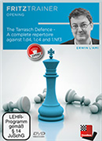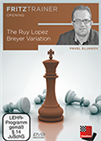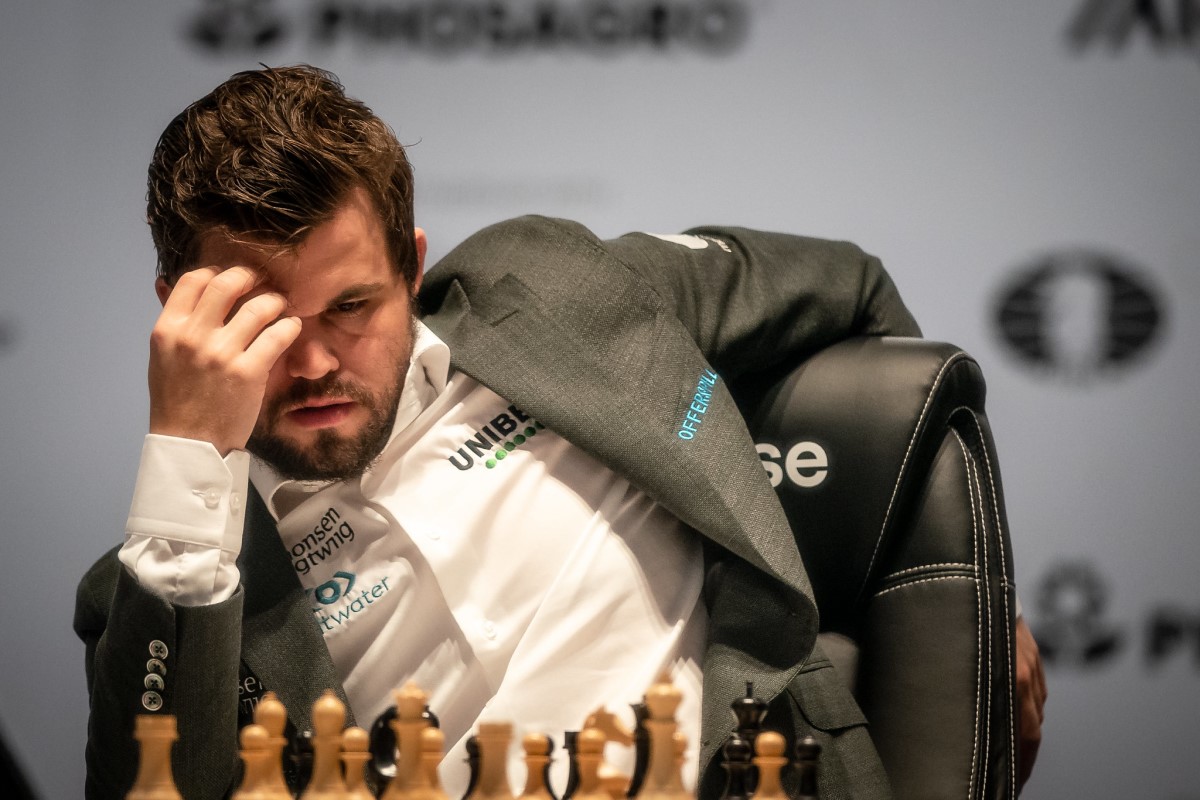Avoiding tilt
Replay full analysis of the game by world number six Anish Giri at the end of the article!
 It is common knowledge among long-time chess aficionados that the most experienced members of the ‘Soviet School of Chess’ recommended their pupils to avoid getting overly eager to bounce back after a loss. Instead, they thought it was better to first dominate one’s emotions by keeping things under control in the very next game.
It is common knowledge among long-time chess aficionados that the most experienced members of the ‘Soviet School of Chess’ recommended their pupils to avoid getting overly eager to bounce back after a loss. Instead, they thought it was better to first dominate one’s emotions by keeping things under control in the very next game.
A player known for being well-versed in chess history, Magnus Carlsen referred to the same principle during the press conference, using more up-to-date language. The world champion mentioned that he understood his opponent’s approach, which perhaps had to do with avoiding tilt after a rather painful loss.
Ian Nepomniachtchi had the white pieces and entered similar lines to the ones seen in games 3 and 5, when he got to put a slight pressure on his opponent. So far in the match, both players have mostly been able to keep the upper hand with the white pieces, with one exception. Nepo explained:
I’m getting much more than I expected out of the opening. But, in general, I think so far the side which plays the black pieces doesn’t experience any problems after the opening — maybe game 2 was slightly different.
While more than half the games played so far in Dubai have been hard-fought struggles, and we got to see a historic encounter on Friday, the seventh game was described by the challenger himself as “boring”. Carlsen equalized with the black pieces and massive simplifications resulted in a 41-move draw.
 Are you looking for an active defence against 1.d4? Look no further! The Tarrasch Defence (1.d4 d5 2.c4 e6 3.Nc3 c5) is one of Black's most ambitious ways to meet 1.d4.
Are you looking for an active defence against 1.d4? Look no further! The Tarrasch Defence (1.d4 d5 2.c4 e6 3.Nc3 c5) is one of Black's most ambitious ways to meet 1.d4.In the game, Nepo was the first one to take a slightly different approach out of the opening, as the contenders were following the general lines seen the two previous times the Russian had the white pieces.
White played 11.d3 here, a theoretical move. Anish Giri commented on Nepo’s decision:
Another twist, keeping the b-pawns on the board for now. In the previous game in this position Ian included 11.c3 b4, got a small plus, but for this game, Magnus (his team) would likely come up with an improvement neutralizing that attempt.
Nepo eventually got an advantage in the centre, but by then Carlsen seemed to have things sorted out in his head.
 Pavel Eljanov explains in depth what Gyula Breyer already saw in 1911 and what became an opening choice of the likes of Kasparov, Kramnik, Anand or Carlsen. The Breyer Variation, which is characterised by the knight retreat to b8.
Pavel Eljanov explains in depth what Gyula Breyer already saw in 1911 and what became an opening choice of the likes of Kasparov, Kramnik, Anand or Carlsen. The Breyer Variation, which is characterised by the knight retreat to b8.
After 17.d4, Carlsen correctly ‘gave up the centre’ with 17...exd4 18.cxd4. However, as Giri notes, the world champion knew that after trading the light-squared bishops he would be fully out of trouble:
White gains space in the centre, but with the second pair of light pieces getting traded, the centre alone is not worth too much. The side with the less space is always happy to trade stuff away. [...] Likely an operation prepared by the team of the world champion.
The players traded queens on move 27, leaving a rook and four pawns per side on the board. Carlsen and Nepo went through the motions until move 41, when the draw was finally signed.
Expert analysis by GM Anish Giri

Up a point going into the second half of the match — Magnus Carlsen | Photo: Eric Rosen
All games
Links
.jpeg)

















 It is common knowledge among long-time chess aficionados that the most experienced members of the ‘Soviet School of Chess’ recommended their pupils to avoid getting overly eager to bounce back after a loss. Instead, they thought it was better to first dominate one’s emotions by keeping things under control in the very next game.
It is common knowledge among long-time chess aficionados that the most experienced members of the ‘Soviet School of Chess’ recommended their pupils to avoid getting overly eager to bounce back after a loss. Instead, they thought it was better to first dominate one’s emotions by keeping things under control in the very next game.





